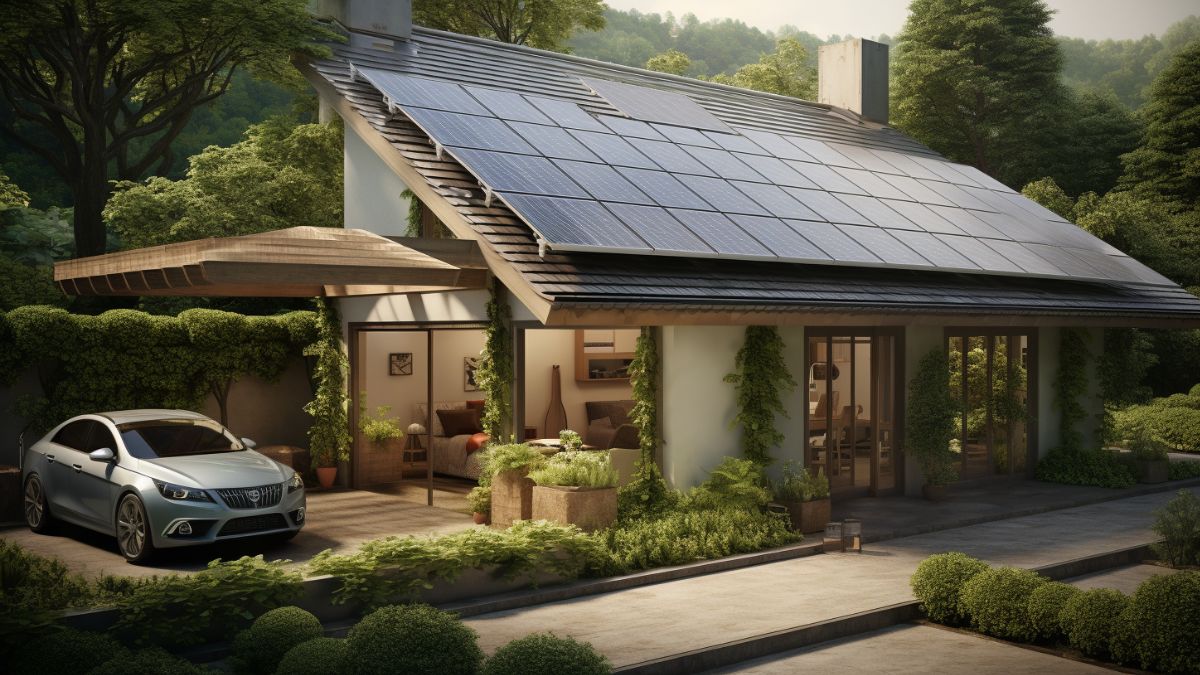Welcome, fellow solar enthusiasts, to our ultimate backup guide on unleashing the power of solar energy! Prepare to be amazed as we’ll exploring solar backup solutions that will enhance the reliability and resilience of your solar PV system.
From batteries to generators, and even the integration of electric vehicle chargers, we’ve got you covered. Get ready to discover the possibilities of solar backup solutions and enjoy lower electricity bills, increased energy efficiency, and a reduced carbon footprint. Let’s dive in!

Battery Backup Options
Battery backup options provide a reliable solution for accessing solar power during utility grid outages. When the power goes out, having a battery storage system in place ensures that you can continue to power your home with the energy generated from your solar panels.
While standard battery backup solutions are typically designed to power critical loads, advancements in technology have made whole home backup more accessible. This means that you can keep your lights on, your appliances running, and your Wi-Fi connected even when the grid is down.
Battery storage systems not only provide peace of mind during outages but also offer the opportunity to take advantage of compensation mechanisms by providing automated services to the utility grid.
Generator Backup Solutions
Generator backup solutions provide an alternative option for accessing power during utility grid outages. While batteries may be the preferred backup choice for some, generators offer a more budget-friendly solution. Here’s why you should consider generator backup:
- Generator sizing: It’s important to choose the right generator size for your needs. A 22kW or 24kW generator can provide close to whole home backup, ensuring that you can power essential appliances and systems during outages.
- Generator maintenance: Like any equipment, generators require regular maintenance to ensure optimal performance. This includes oil changes, filter replacements, and periodic inspections. Don’t forget to keep fuel levels topped up and test the generator periodically to ensure it’s in working order when you need it.
- Cost-effective option: Generators typically cost around $12,000 to $15,000 for powering critical loads. While there may be a waiting period for installation, it’s a cost-effective backup solution that can provide peace of mind during power outages.
Electric Vehicle Charging Integration
When considering backup options for accessing power during utility grid outages, integrating electric vehicle charging is a practical and efficient solution. Electric vehicle chargers can be seamlessly installed alongside solar PV systems, allowing solar power to offset the increased energy usage from charging an EV. This integration not only maximizes the use of renewable energy but also provides backup power during grid outages.
The charging infrastructure for EVs has become more accessible, with Level 2 chargers being installed in most homes without significant electrical upgrades. The cost of installing a Level 2 charger typically ranges between $3,500 and $6,000.
Solar Plus Storage Solutions
The ultimate backup solution is the integration of solar plus storage. By combining solar panels with battery storage, we can maximize the use of renewable energy and provide backup power during grid outages.
Here are three reasons why solar plus storage is a game-changer:
- Maximizing solar energy: With solar plus storage, we can store excess solar energy generated during the day and use it when the sun goes down. This means we can make the most of our solar panels and reduce our reliance on fossil fuels.
- Renewable energy storage: By using batteries to store solar energy, we can ensure a constant and reliable power supply even when the grid goes down. This isn’t only convenient but also helps to reduce our carbon footprint.
- Enhanced energy resilience: Solar plus storage gives us the peace of mind knowing that we’ve a backup power source in case of emergencies or power outages. We can stay connected and keep our essential devices powered up even when the rest of the neighborhood is in the dark.
With solar plus storage, we can harness the power of the sun and be prepared for any situation, all while contributing to a greener and more sustainable future.
Benefits of Solar Plus
By combining solar panels with battery storage, the benefits of solar plus storage become apparent. Maximizing solar energy is one of the key advantages of this system. With battery storage, excess solar power generated during the day can be stored for use at night or during grid outages.
This allows homeowners to become more self-sufficient with solar power, reducing their reliance on the grid and fossil fuels. In addition to maximizing solar energy, solar plus storage also enhances energy resilience. During power outages, the battery can provide backup power, ensuring that critical appliances and systems continue to function.
This not only provides peace of mind but also increases energy efficiency and reduces carbon footprint. Furthermore, homeowners with solar plus storage have the potential to sell excess energy back to the grid, further offsetting their electricity bills.
Cost Considerations
Affordability is a key factor to consider when evaluating the cost of backup options for solar power systems. When it comes to solar backup economics and financial considerations, there are a few factors to keep in mind:
Batteries and Battery Backup
- Battery backup can provide power during brownouts and blackouts.
- Standard battery backup solutions are designed to power critical loads, not the entire home.
- The cost of battery backup may be high for some, but it provides peace of mind.
Generators
- Installing generators alongside solar PV can be cost-effective.
- A 22kW or 24kW generator can provide close to whole home backup.
- Generators may have a waiting period for installation.
EV Chargers
- Solar power can offset the increased energy usage from charging an EV.
- Level 2 charger installation typically costs between $3,500 and $6,000.
Considering these options and their associated costs will help you make an informed decision about the most suitable backup solution for your solar power system.
Future Trends in Solar Backup Technology
As we explore the future trends in solar backup technology, let’s talk about the exciting advancements that are revolutionizing the way we harness and store solar power.
Solar backup advancements are paving the way for grid independent solutions, allowing us to break free from the limitations of traditional power sources. One such advancement is the development of advanced battery technologies that offer higher energy storage capacity and faster charging times. This means longer-lasting backup power and reduced downtime during outages.
Additionally, innovative microgrid systems are being developed that can seamlessly switch between solar power, battery storage, and other renewable energy sources, ensuring a constant and reliable power supply. These grid independent solutions not only provide backup power but also contribute to a greener and more sustainable future.
With these advancements, we’re entering a new era of solar backup technology that promises greater energy resilience and self-sufficiency.

Conclusion
Exploring backup options for solar power can greatly enhance the reliability and resilience of your system.
One interesting statistic to consider is that according to a study by the U.S. Department of Energy, solar plus storage systems can reduce electricity bills by up to 90%. This highlights the immense potential for cost savings and energy efficiency through the integration of solar panels with battery storage.
By embracing solar backup solutions, you can unlock the full benefits of renewable energy and contribute to a greener future.




